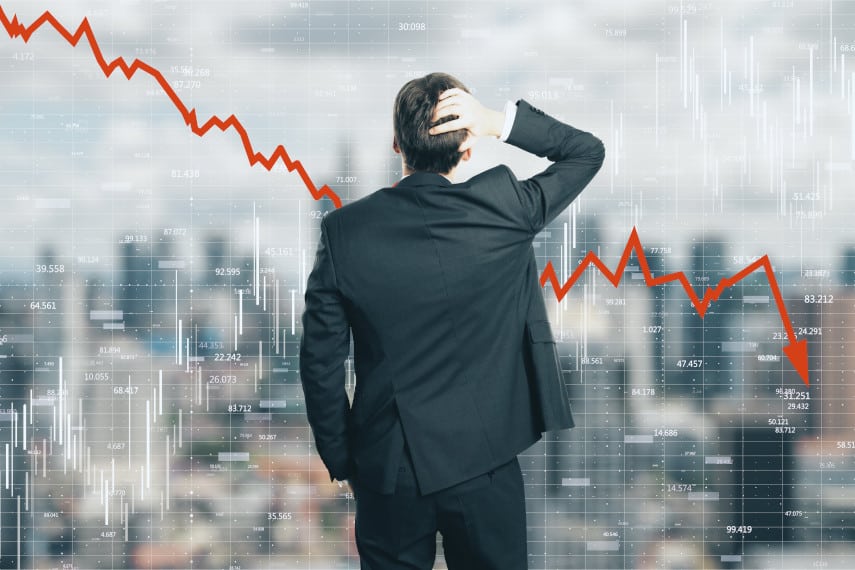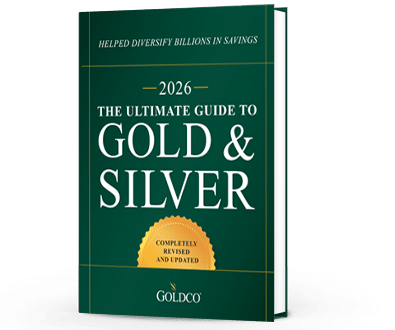6 Indicators of a Potential Recession
It seems that in the media today there are more and more mentions of the dreaded R-word: recession With growing economic uncertainty, the threat of potential recession seems to be growing as...
Economy

The minds of everyone on Main Street are on inflation and the effect it is having on driving up their cost of living. The minds of everyone on Wall Street are on the Federal Reserve and whether or not it will begin tapering its asset purchases. And the minds of everyone in Washington are on the infrastructure spending bill and, after that, many more trillions of dollars in government spending. But no one seems to be thinking about the likelihood of a recession.
The lockdown-induced recession last year was Great Depression-like in its severity, but it was also the shortest recession on record. Thankfully, governments realized just how badly they had screwed up by trying to lock down the economy, and things opened up very quickly. But just because we’ve had a “recovery” since then doesn’t mean that the economy is in great shape. The risk of a severe recession is just as great today as it was before the lockdowns. And if a recession occurs, it could be disastrous for consumers and investors.
The next recession could even make the 2008 financial crisis look like nothing, with financial markets plummeting and numerous businesses declaring bankruptcy. If you’re worried about your retirement savings, you need to start thinking about how to safeguard them before a recession hits, and you need to be on the lookout for signs of the coming recession. Here are six indicators that demonstrate just how likely a recession is.
One of the largest threats to the economy is the massive debt bubble that has grown since 2008. The last financial crisis already demonstrated the dangers of excessive debt accumulation, but the problem has only grown worse since then.
Businesses have increased their debt holdings by over 50%, households are more indebted than ever, and government debt has climbed astronomically. Once the debt bubble is pricked, the economy could come crashing down like a giant house of cards.
Stock markets are overvalued by just about all metrics. And an increasing percentage of stock market growth is concentrated among a small handful of large firms. That isn’t healthy for the stock market, and it’s also an indicator that most sectors of the economy aren’t that healthy.
We saw stock markets lose 35% of their value last spring after the lockdowns started, and they lost nearly 55% during the 2008 financial crisis. They could lose even more during the next recession. Just imagine the Dow Jones dropping to 10,000 points, a 70% decline. That’s not outside the realm of possibility. Could your savings withstand those kinds of losses?
The urge to get rich quick has returned to investing markets in a way that we haven’t seen since the 2000 dotcom bubble. Retail investors are piling money into stock markets in record numbers, thank to apps like Robinhood that make buying stocks easier, and stimulus payments that have put thousands of unearned dollars into every American’s pockets.
The massive amounts of Federal Reserve stimulus over the past year have flowed into financial markets, making it appear that stock markets are on a permanent upward trend. But every time in history that it has appeared that stocks are a can’t lose proposition, they almost inevitably suffer huge losses.
The kind of euphoria we’re seeing today is eerily reminiscent of the time before the Great Depression, when eminent economists like Irving Fisher remarked that stock markets were at a permanently high plateau. Of course, we know what happened. Stocks lost over 80% of their value and didn’t fully recover until 25 years later.
If we’re on the verge of another similar downswing (and it’s been nearly 100 years, so you can argue that we’re overdue), the effects could be catastrophic. Imagine losing the savings you’ve worked for decades to accumulate, and not ever being able to recoup those losses.
As much as the Federal Reserve tries to inspire confidence in the banking system through its stress tests, the truth is that in a real systemic crisis, the banking system just isn’t strong enough to withstand the pressure on it. Regulators are constantly fighting the last crisis, so you can all but guarantee that the next threat to the financial system will be something completely unforeseen, for which the financial sector will be unprepared.
The reality is that the US banking system is a nearly 150-year-old system with a series of patchwork fixes every few years to overcome the effects of each successive crisis. But with so much debt in the system today and so much over-leveraging, it’s not as robust as its proponents would like us to believe. In the event of a major systemic crisis, we could see the financial system come crumbling down.
Millions of Americans are still out of work and dependent on unemployment benefits to get by. Businesses are experiencing labor shortages, as well as inconsistent supplies of parts and materials. The economy is nowhere close to functioning normally, and inflation being added to the mess is causing many Americans to fear for the future.
As much as policymakers in Washington would like to assure us that everything is just fine with the economy, that’s just not the case. And things could get much worse before they get better.
The Federal Reserve has added over $4 trillion into the economy since last year and it shows no signs of stopping anytime soon. Taper talk has so far been just that, all talk. The Fed most recently decided to continue its asset purchase policy that is seeing nearly $1.5 trillion of money added to the economy each year.
Such a massive money dump has caused inflation to start to increase significantly. And with no end to the monetary easing in sight, inflation could continue to rise even further.
Remember that the cause of the 2000 dotcom bubble and the 2008 housing bubble was the Fed keeping interest rates too low for too long. Now we’ve had over a decade of low interest rates, trillions of dollars of money created out of thin air and pumped into the economy, and we’re expected to believe that there isn’t a massive bubble being created that will burst in spectacular fashion? Yeah, right.
With the recent spread of the delta variant of COVID, governments and health authorities are starting to freak out about the rising number of COVID cases, and particularly COVID breakthrough cases. Some areas are introducing mask mandates, and some politicians are calling for businesses to ban the unvaccinated from their stores.
There are even rumors of a return to lockdowns, something that would wreak havoc on the economy and cause a return to last year’s panic. While we would all hope that politicians learned their lesson from last year’s snap recession, maybe that’s too much to hope for. And while lockdowns obviously aren’t guaranteed, there’s no telling how the virus will progress and how politicians will react. This is one wild card that could really mess things up.
The likelihood of a severe recession or even an all-out financial crisis isn’t as much a question of if but when. No one knows for sure when the downturn will occur, but when it happens it could be both severe and long-lasting.
If you’re planning to retire within the next decade, or if you just recently entered retirement, there’s a good chance that your retirement plans could be affected by recession. It’s up to you to protect your assets against the loss that would entail.
Many investors today are turning to precious metals like gold and silver to protect their retirement savings. Gold and silver have a great track record of protecting wealth during times of recession. During the 1970s stagflation, for instance, gold and silver both averaged annualized gains of over 30% for the decade, far better than stagnant stock markets and far higher than even the 11% rate that inflation reached.
In the aftermath of the 2008 financial crisis, gold nearly tripled and silver more than quintupled. And last year gold hit a record high price and silver gained nearly 50% in response to the lockdown-induced recession. The evidence is clear that gold and silver can be very important assets to hold during times of recession.
With modern investment vehicles such as a gold IRA or silver IRA, investing in precious metals can be done relatively easily too. A gold IRA or silver IRA allows you to invest in physical gold or silver coins or bars while still enjoying the same tax benefits as a normal IRA retirement account. And if you have existing IRA, 401(k), TSP, or similar retirement accounts, you can even roll over or transfer those funds into a gold IRA or silver IRA tax-free.
If you have a lot of money on the line, don’t you owe it to yourself to keep it protected? Don’t wait for the worst part of a recession to make the decision to safeguard your assets. Talk to the experts at Goldco today to learn more about how gold and silver can help protect your retirement savings.

